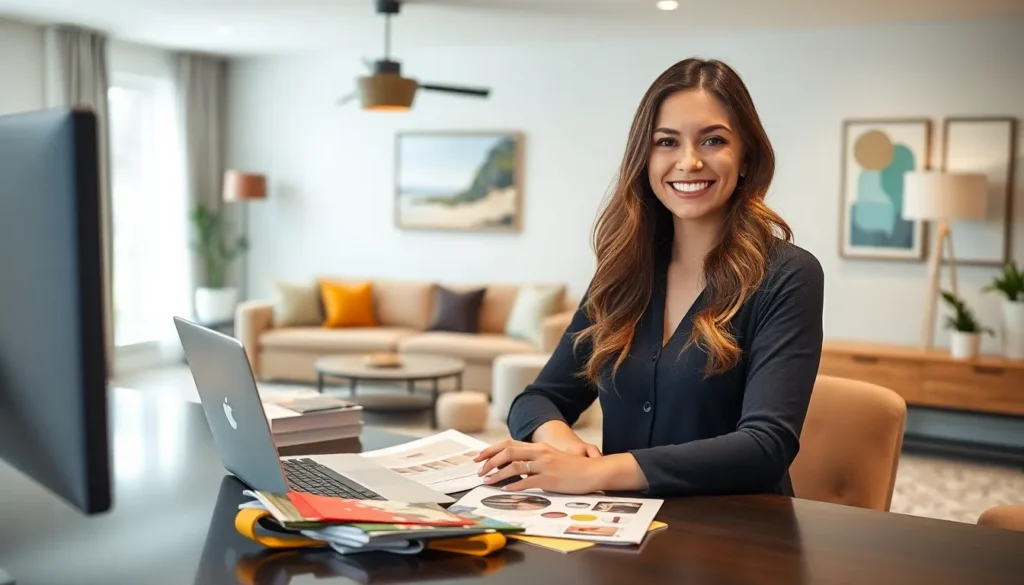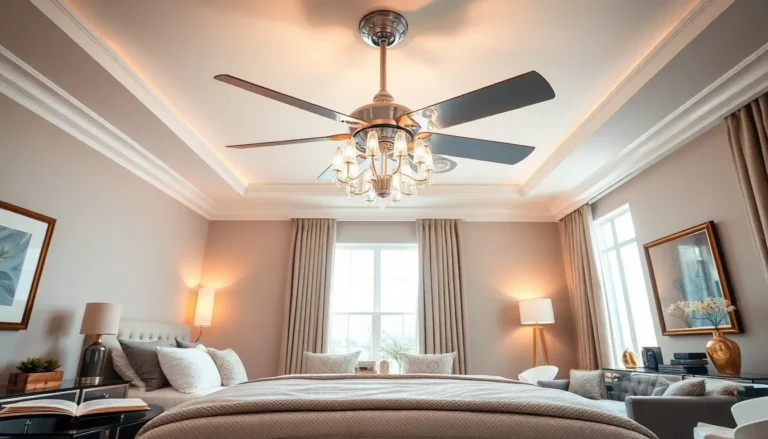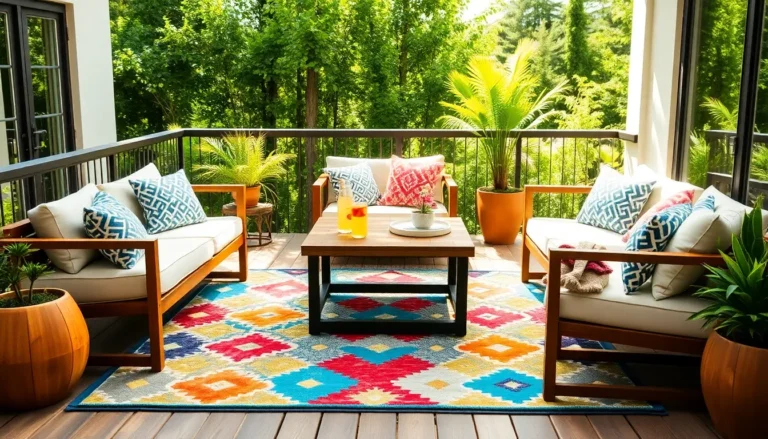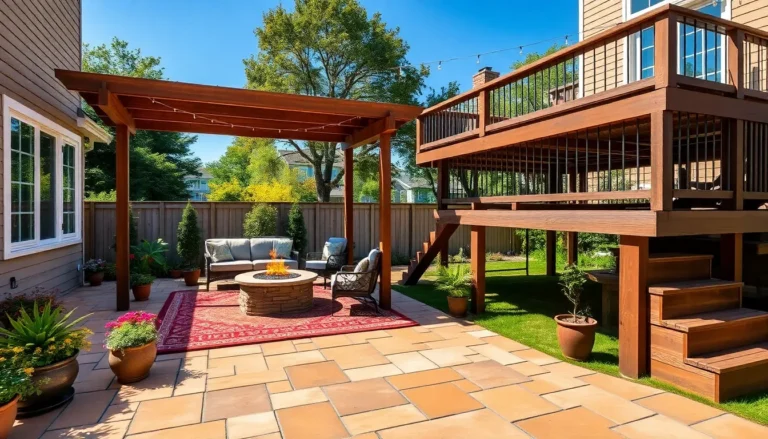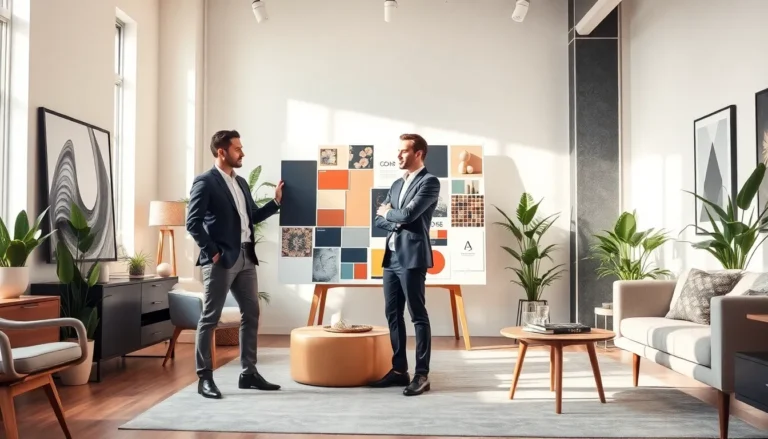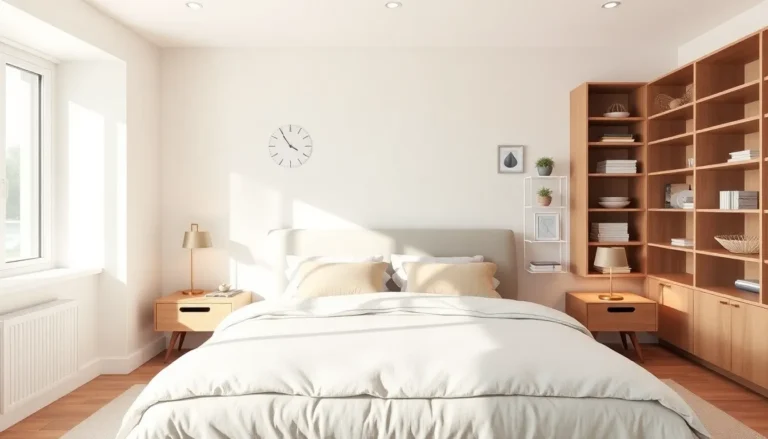Table of Contents
ToggleIn a world where scrolling through endless home décor options feels like a full-time job, online interior design is the superhero you’ve been waiting for. Gone are the days of flipping through dusty magazines or wandering aimlessly through showrooms. Now, with just a few clicks, anyone can transform their space from drab to fab without breaking a sweat—or the bank.
Overview of Interior Design Online
Online interior design offers a streamlined approach for enhancing living spaces. Many platforms provide virtual consultations, allowing designers to assess a client’s needs from anywhere. Users can access a plethora of design styles and trends at their fingertips. Most importantly, the affordability of online services makes professional guidance accessible to wider audiences.
Clients experience a user-friendly interface when using online design tools. 3D modeling software enables users to visualize changes before commitment. Designers often create tailored mood boards that reflect the client’s style preferences and specific requirements. Collaboration becomes effortless through shared platforms that allow real-time feedback.
In terms of convenience, online interior design allows for flexible scheduling. Clients can communicate with designers via email, chat, or video calls. Increased access to a global pool of designers means a diverse array of styles and expertise. Many companies also provide complementary resources, such as budgeting tools and style guides.
Customization stands out as a significant feature in online interior design. Users select colors, materials, and layouts that work best for their living spaces. Innovative tech tools simplify the process, turning overwhelming decisions into manageable tasks. Ultimately, the evolution of online interior design represents a significant shift in how individuals approach home aesthetics.
Benefits of Interior Design Online

Interior design online offers significant advantages for individuals seeking to enhance their living spaces. These benefits include flexibility, convenience, and comprehensive access to resources.
Flexibility and Convenience
Flexibility allows users to engage in the design process when it suits them best. Designers can provide consultations through video calls, eliminating geographical constraints. Scheduling meetings outside traditional hours promotes better communication. Clients feel empowered to explore design concepts at their own pace. Online platforms facilitate immediate responses to queries, streamlining the decision-making process. Solutions are readily available, which keeps the project moving forward efficiently.
Access to a Variety of Resources
Access to a plethora of resources enriches the interior design experience. Online platforms showcase diverse design styles that cater to different tastes. Users can explore extensive libraries of materials, textures, and colors. Mood boards allow easy visualization of preferences and concepts. The inclusion of reviews and ratings fosters informed choices when selecting designers. This variety helps clients discover trends they might not encounter through traditional means. Additionally, numerous design tools provide valuable insight, enhancing overall project quality.
Popular Online Interior Design Platforms
Numerous platforms have emerged, catering to diverse design needs and preferences. Each one offers unique features and services, making it easier for clients to personalize their spaces.
Features of Leading Platforms
Leading platforms provide user-friendly interfaces that facilitate the design process. Visualization tools, such as 3D models, allow clients to see potential changes in their spaces. Scheduling flexibility enhances communication between designers and clients. Mood boards tailored to individual styles encourage creative expression. Some platforms even feature augmented reality capabilities, allowing users to view designs in real-time. Importing images for inspiration streamlines the collaboration process. Availability of diverse design styles caters to a broad audience seeking various aesthetics.
Comparison of Services Offered
Services offered vary significantly across platforms. Some focus on virtual consultations to assess client needs remotely. Others provide extensive libraries of furnishings and materials, enabling users to select from numerous options. Pricing structures differ, ranging from subscription models to one-time fees, reflecting diverse budgets. Implementation support, including project management, may be offered by certain platforms, ensuring seamless execution. Additional resources, such as blogs or design articles, enhance user knowledge. Access to client reviews helps inform decision-making on the chosen service. Overall, these comparisons reveal the flexibility and adaptability inherent in online interior design.
Tips for Successful Online Interior Design
Successful online interior design hinges on a few key strategies. Engaging with your style and budget early on ensures a smoother process.
Defining Your Style Preferences
Identifying personal style preferences creates a clear vision for the space. Explore design inspiration through platforms like Pinterest or Houzz. Collect images that resonate with you, highlighting colors, furniture, and layouts. Narrow down choices to two or three primary themes. This focused selection guides designers in creating tailored concepts that suit your taste.
Budgeting for Your Project
Establishing a budget sets the stage for your online design journey. Research average costs for design services to create a realistic financial plan. Consider materials, furnishings, and any necessary renovations when planning expenses. Prioritize key elements that matter most to you, whether that’s unique furniture or sustainable materials. Using a budget spreadsheet can help track expenses and adjust as needed, ensuring you stay within financial limits.
Online interior design has transformed how individuals approach home décor. With the ability to connect with designers from anywhere and access a wealth of resources, clients can create spaces that truly reflect their personal style. The convenience of virtual consultations and user-friendly tools empowers users to engage in the design process at their own pace.
As technology continues to evolve, the options for customizing and visualizing designs will only expand. This shift not only enhances the overall experience but also makes professional guidance accessible to a broader audience. Embracing online interior design can lead to beautifully curated spaces that are both functional and aesthetically pleasing.

